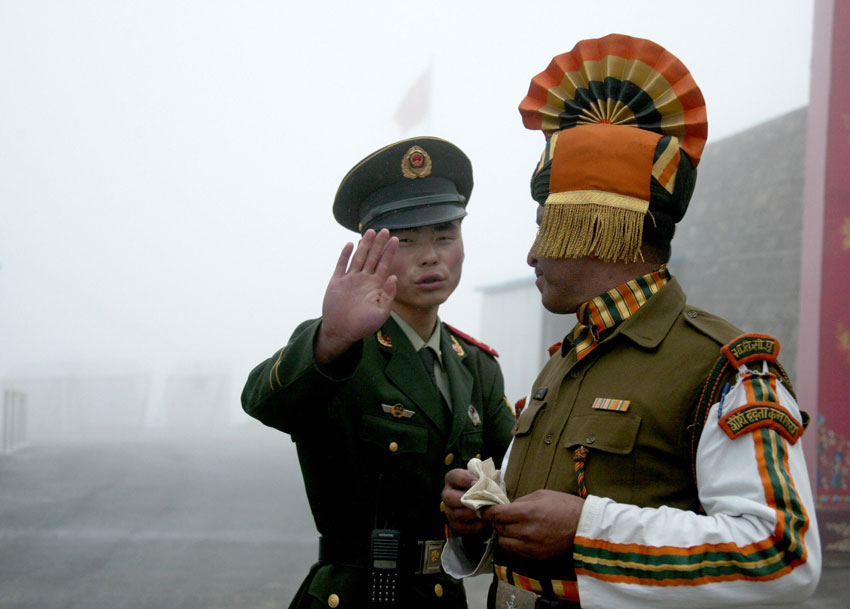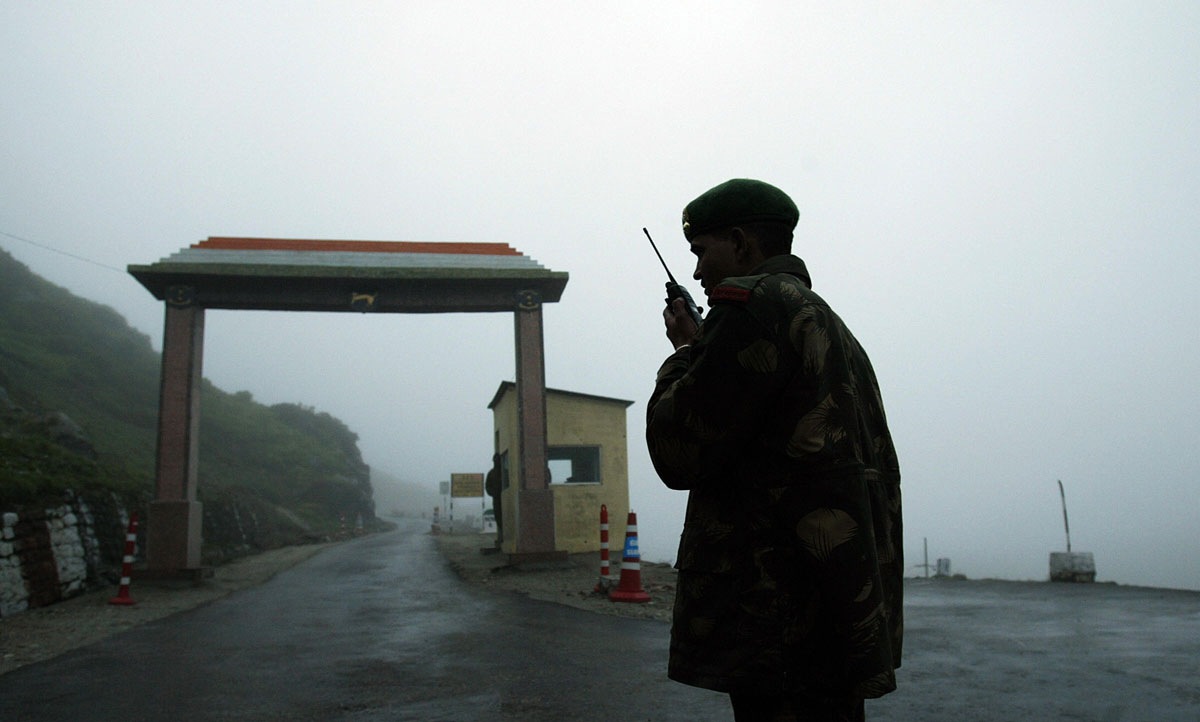Can’t Share Brahmaputra Data, But Open for Talks to Resume Kailash Yatra: China
File photo, taken on July 4, 2006, of an Indian soldier as he communicates with colleagues on a walkie-talkie at Nathula Gate, leading to the Nathu La border crossing between India and China, some 31 miles east of Sikkim state capital Gangtok. (Deshakalyan Chowdhury/AFP/Getty Images)
Post Doklam, China said, Sept. 12, it cannot share with India, the hydrological data of the Brahmaputra river due to upgradation of data collection station in Tibet, but expressed readiness for talks to reopen the Nathu La pass in Sikkim for the Kailash-Mansarovar Yatra, writes K.J.M. Varma.
China is expected to share hydrological data on the Sutlej and Brahmaputra rivers with India during the flood season of May 15 to June 15 under a bilateral expert-level mechanism established in 2006.
“For a long time we have conducted cooperation on the river data with the Indian side. But to upgrade and renovate the relevant station in the Chinese side, we do not have the conditions now to collect the relevant statistics of the river,” Chinese Foreign Ministry spokesman Geng Shuang told media in Beijing.
Asked when will China provide the data, which was reportedly suspended due to the Doklam standoff, he said, “We will later consider that.”
Asked whether India has been informed about not sharing of the hydrological data, he said according to his information the Indian side is aware of the relevant situation.
On August 18, Indian External Affairs Ministry spokesman Raveesh Kumar had said there is an existing expert-level mechanism, established in 2006, and there are two MoUs under which China is expected to share hydrological data on rivers Sutlej and Brahmaputra with India during the flood season of May 15 to June 15.
“For this year, we have not received hydrological data from the Chinese side,” Kumar had said.
The data share by upper riparian state, China, to lower riparian states, India and Bangladesh is essential every monsoon to allow anticipation of the flow of the water and take necessary measures to deal with flooding in India’s northeastern states.

China’s stand citing technical reasons to not provide the hydrological data could pose major problems for India, especially to manage flood and drought seasons.
China has been building major dams on the Brahmaputra river to generate hydel power. It has operationalized Zangmu hydroelectric project in October 2015, and three more are under construction.
While the dams raised concerns of water shortages in India and Bangladesh which are lower riparian states of the Brahmaputra river, known as Yarlung Tsangpo in Tibet, China says its dams were run of the water projects to generate power and was not aimed at storing water.
Geng sounded positive on the reopening of the Kailash-Mansarovar pilgrimage route through Nathu La Pass in Sikkim, which was suspended over the Doklam standoff.
Geng said China is ready to “keep communication” with the India on this issue.
“For long China has made efforts against all odds to provide necessary convenience to the Indian pilgrims.
According to the agreement reached between the two leaders and based on the fact that the western section of the India-China boundary has been recognized by the two sides, China opened the pass to the Indian pilgrims,” he said, replying to a question when China will open the route to the Indian pilgrims as the Doklam standoff has been resolved.
The foreign ministry spokesman said the opening of the Nathu La pass was suspended as the Indian troops “illegally crossed the border leading to the tensions at the border.”
“The Indian troops illegally crossed the border leading to the tensions at the border. So the opening of the pass was suspended,” he said.
“So China stands ready to keep communication with the Indian side in regard to the opening of the pass and other issues relating to the pilgrims,” he said.
India and China last month ended a 73-day standoff in Doklam area of the Sikkim sector that was triggered by China’s move to build a road in the border area.
The Sikkim route to Mansarovar was opened in 2015, enabling pilgrims to travel the 1500-km long route from Nathu La to Kailash by buses.
The Yatra was being organized by External Affairs Ministry since 1981 through Lipu Pass in Himalayas connecting the Kumaon region of Uttarakhand in India with the old trading town of Taklakot in Tibet.


